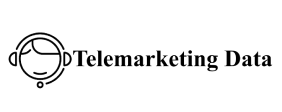Data is also useful for understanding what is happening around your company. Competitive analysis in content marketing helps you map out your competitors’ strategies and benchmarks, find out what is working, and inspire you to come up with new content ideas.
In addition, you can also monitor your position in the market. In an SEO analysis, it is possible to know who competes with your brand in Google results , for example.
This way, you can analyze the strategies and understand what you need to do to conquer your space.
Identify seasonality
One of the most important tasks of data kazakhstan phone number list analysis is to identify patterns of behavior . Among thousands and thousands of users, you can notice that interest in a certain topic increases with some seasonality.
Interest in topics related to the Olympic Games, for example, has a clear tendency to grow every four years.
Therefore, the most opportune time to produce content that generates more results is when those peak moments are approaching.
Identify content that performs best
In data analysis, you can also identify which content performs best, according to the indicators you monitor (reach, time on page, conversions, etc.).
A deeper analysis of that content can show you which topics, approaches, formats and channels are likely to generate the most interest and results.
Optimizing the consumer experience
Finally, Data Marketing helps you create a better experience for consumers who come into contact with your content . It gives you the ability to address topics that are more interesting to them, on the channels they prefer to use, with content that answers their questions and satisfies their needs .
How to do data-driven content marketing?
Now, let’s get to the practical part: how to use Data Marketing to guide content strategies?
Some professionals may think that all they need to do is use a few tools and view some data to produce data-driven content.
However, data marketing requires you to plan data collection and analysis procedures, always focusing on business objectives.
Now, let’s look at the main tips for structuring marketing with a focus on Data Marketing:
Deepen your audience knowledge
We have left behind the era when marketing top mobile video platforms worked only with the demographic profile of the target audience and data on location, age and gender. And this is not because they are no longer important for profiling the audience, but now it is also necessary to deepen knowledge about interests, motivations and behaviours.
Content production should focus on what the public wants or needs to know at that moment. Therefore, use data to find out what people’s doubts and needs are and create posts that help them resolve them. In this way, the brand gets closer to the public , because it shows its usefulness.
You also need to understand, through data, what motivates people, what their values are, and where they are in life. This way, the brand can connect with them and create meaningful conversations .
Find out what data to monitor
Working with Big Data requires planning bgb directory to avoid getting lost in the huge volume of data out there. When looking at Google Analytics reports , for example, you have so much information available that you may not be able to extract intelligence from it.
Therefore, it is necessary to know how to prioritize the data that you need to monitor. And what defines this prioritization are the objectives that must be set in the marketing planning.
This way, you can identify the KPIs , or key performance indicators, that show whether your content is on track to meet your objectives.
If content marketing aims to increase brand awareness , for example, data marketing should prioritize reach metrics, positioning in Google results, searches for the brand name in the search engine, among others.
Explore different types of data
To explore the full potential of Data Marketing, it is necessary to use the different types of data that can be collected.
First, look at primary and secondary data . Primary data is data that has never been collected before; your company is the one that goes to consumers, or other sources, to find out who they are and what they think.
This data is valuable for getting to know your audience better and answering specific questions about your search. It is generally collected through:
- interviews ;
- questionnaires;
- feedbacks ;
- focus groups ;
- ethnography or netnography;
- web analytics tool codes ;
- heat maps .
Secondary data, on the other hand, has already been collected by other companies, organizations or researchers. It can reveal general characteristics of the public or major market trends , for example.
They may be available in:
- newspaper and magazine reports;
- reports from research institutes;
- government publications;
- professional association studies;
- academic works.
It also explores quantitative and qualitative data. Quantitative marketing studies , usually conducted with questionnaires, can cover a larger population and reveal behavioral patterns , but they do not provide in-depth answers.
On the other hand, qualitative data is obtained from fewer people and does not correspond to the general behavior of the population. But it provides a depth of data that helps to better understand the behavior and motivations of the public studied.

